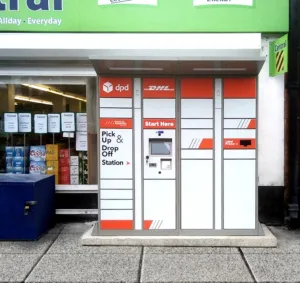By Andre Hordagoda, Co-CEO & Co-founder of Go Instore
Whether you dread it or adore it, you simply couldn’t ignore it. Black Friday was back with a bang, with millions of UK bargain hunters beating online traffic, skipping in-store stampedes, and spending over £9.42 billion to nab the best deals in the run-up to Christmas 2021.
But the name ‘Black Friday’ has nothing to do with the bruises shoppers get from battling for the last half-price TV. It actually stems from the period of the year when sales surge and shops finally begin to turn an annual profit or move ‘into the black’. So, as the biggest date in the British shopping calendar, Black Friday offers retailers the ideal chance to tempt in new buyers with attention-grabbing discounts – and then wow them with a customer experience they’ll remember long after the seasonal sales are over. Yet after 20 months of transformation, exactly what experience are customers looking for now?
It’s hard to say. The big return to Black Fridays of old wasn’t guaranteed, with winter infection rates and retail staff shortages persuading some shoppers to stick with ecommerce for another year. Equally, other bargain hunters were itching to get back on the high street after missing out during 2020’s online-only event. So, what’s the best way to build brand loyalty and create exceptional experiences for everyone beyond the year’s peak shopping season?
Be ready to serve your customers, wherever they are
To create an outstanding customer experience both in-store and online, retailers must adopt an ‘omnichannel’ approach. Omnichannel retail means giving shoppers options to interact with your business in the easiest, quickest way possible. Depending on the customer, this could mean visiting your shop in person, going online, using a smartphone app, via social media – or even a combination.
By offering their products and services from anywhere, at any time, brands are not only making it faster for a customer to buy from them on Black Friday. They’re making it easier and more appealing for them to return to them in the future. After all, shoppers who buy both in-store and online have a 30% higher lifetime value to you than if they can only use one channel at a time. And perfect way to cover both physical and digital bases? Video-powered retail.
Offer personal experiences, even online
Personalised customer service is a timeless way of guaranteeing shoppers return to your business. However, it’s tough to mimic the human touch of in-store support when serving customers online.
Retailers like Currys PC World, M&S and Pets at Home are ahead of the curve, achieving personalisation by merging in-person and internet shopping for a ‘phygital’ experience. By using video-powered retail, customers can video call an in-store expert to guide them through the product range, and give them the expert, bespoke advice that shoppers value in physical stores.
This approach not only transforms customer service and brand loyalty but boosts sales too. Through video-powered retail, brands ranging from The White Company to Pandora (selling everything from furniture to jewellery) are seeing 4.8–5* customer satisfaction rates, and average order values increase by up to 48%. By serving shoppers on their terms, and offering an uncompromised customer experience, other brands could also expect higher sales, and satisfied customers returning again and again.
Look to the east for inspiration
In Asia, Black Friday is gazumped by ‘Singles Day’, the continent’s biggest online shopping event with a whopping £70 billion of sales in 2020. The idea is similar – companies slash product prices, and customers flock to shops and websites to secure the best deals. But the biggest difference between the events is Singles Day’s widespread use of livestream shopping, or ‘live commerce’.
Livestream shopping involves a host, often an influencer or celebrity, promoting a product through a live video stream. Viewers can interact with the host in real-time by commenting on the product, asking questions about its features, and clicking through to buy all within a handful of seconds. And the success of Single Day’s live streams is undeniable, with one platform (Douyin) bringing in over $313 million during last year’s event alone.
It’s no surprise that western companies are now starting to take note, with Twitter launching a new live commerce platform, which was debuted by US giant Walmart, and hosted by popstar Jason Derulo. But while these large-scale streams often manage to bring in huge amounts of sales, the strongest customer experience is always a one-on-one consultation between a customer and a knowledgeable adviser.
So, as livestreams and video calls prepare to take over the retail sales peaks of the future, companies that get on board early will attract the most repeat customers—and reap the largest rewards.
Grow your knowledge of customers and prospects
Remember, Black Friday is just one day (though it can feel like longer). To make the most of seasonal peaks, retailers need to use them to gather consumer data, behaviours and preferences that help create more personalised experiences throughout the rest of the year.
Let’s say you’re running a furniture website, and on Black Friday a user added two pillows to their basket but didn’t go through with the purchase. Don’t panic—you now know that this person is looking for pillows and has an interest in your brand. So, next time you release a new range or offer more discounts, you’re able to target them with online ads, or even email them directly. If they do buy the pillows? Great! Now, why not take the opportunity to get authentic, digestible feedback on their experience?
Actional data insights and business intelligence can even be used within a phygital approach. Imagine if the in-store expert video-calling a customer also knew their past purchases, favoured products, delivery preferences, and more. With in-depth data at your fingertips, you can create a personalised experience that physical shopping experiences can’t match staff are focused purely on one customer, and the shopper is experiencing your products from the comfort of their own home. Those who catch on to this new hybrid purchase journey will be retaining so many customers that Black Friday becomes, well, just another Friday.










